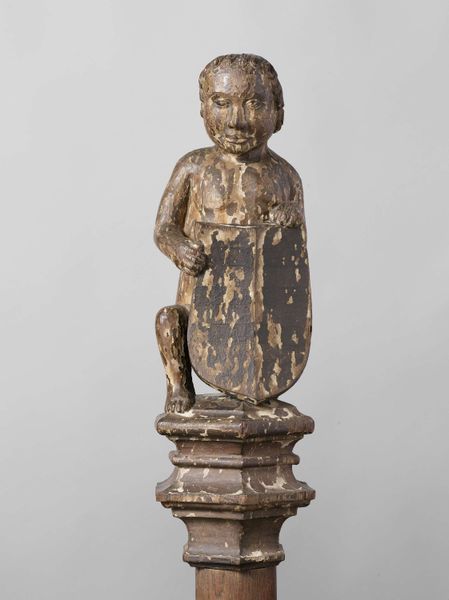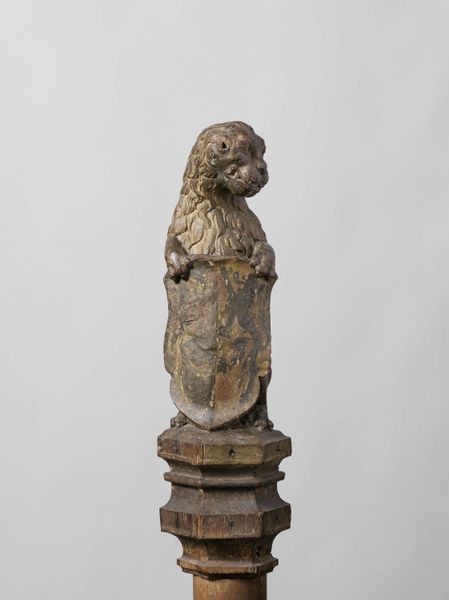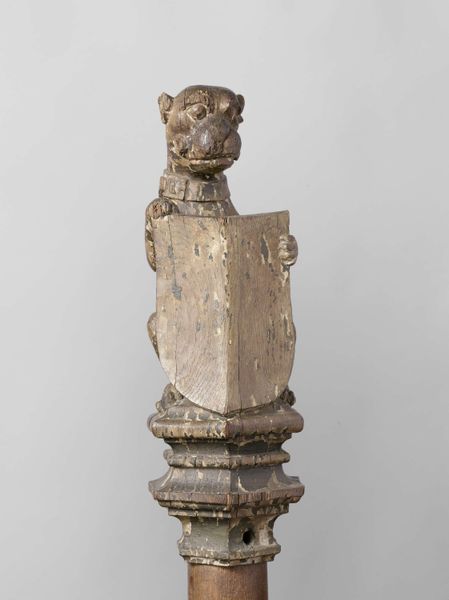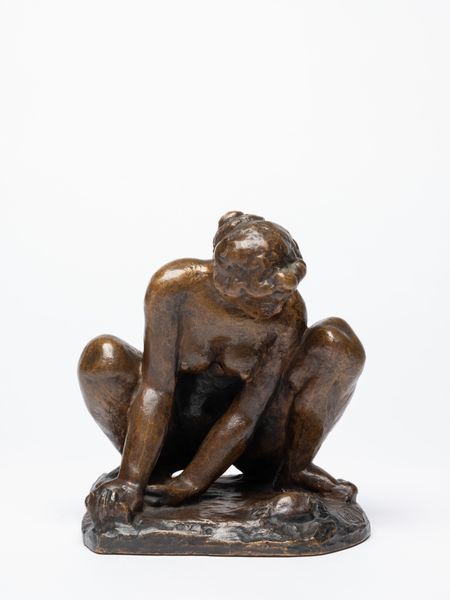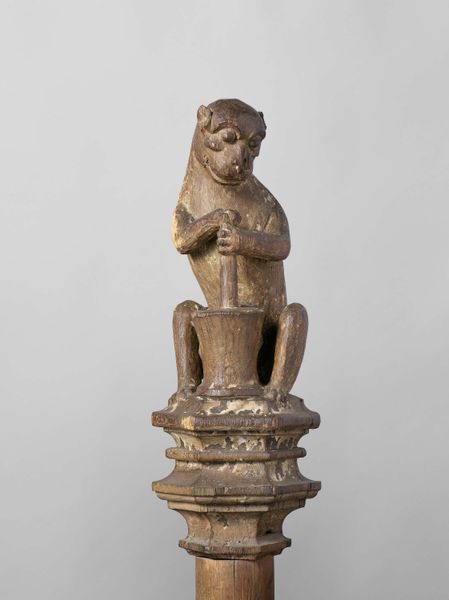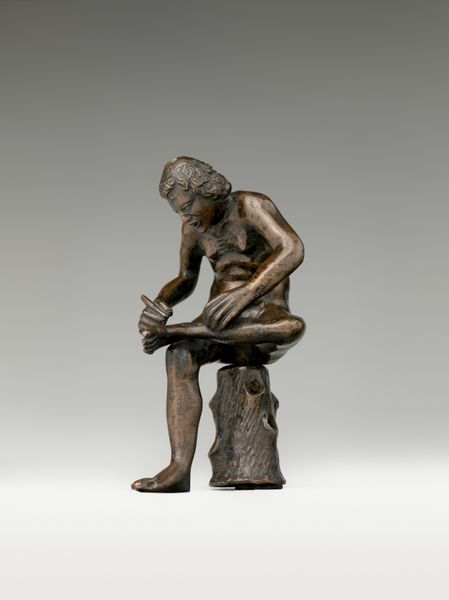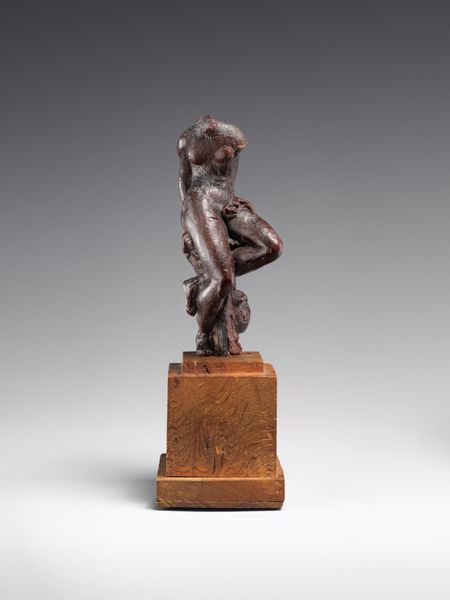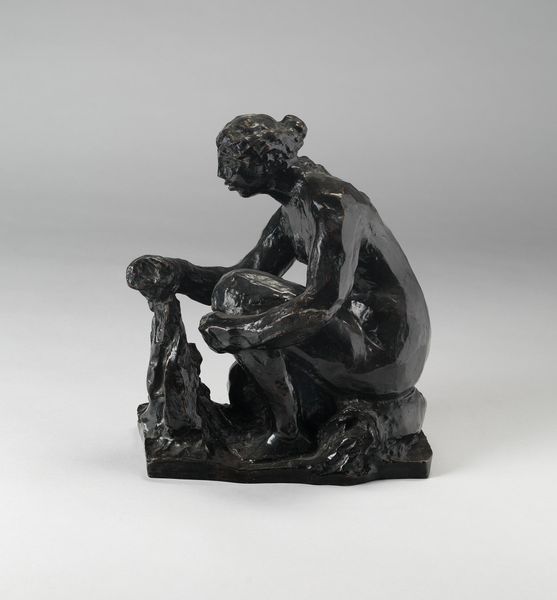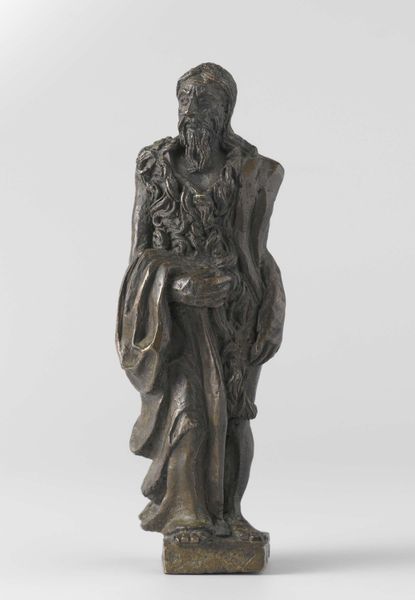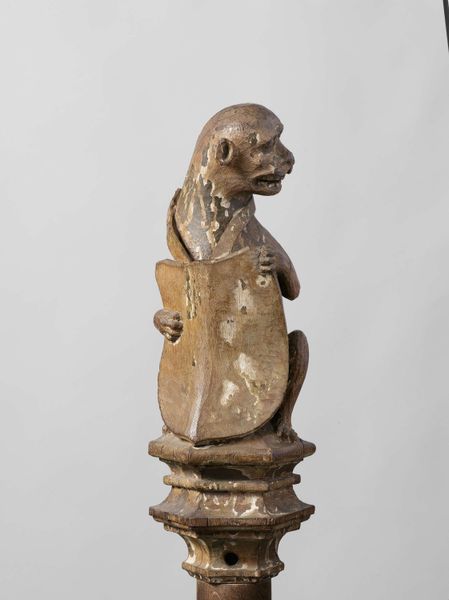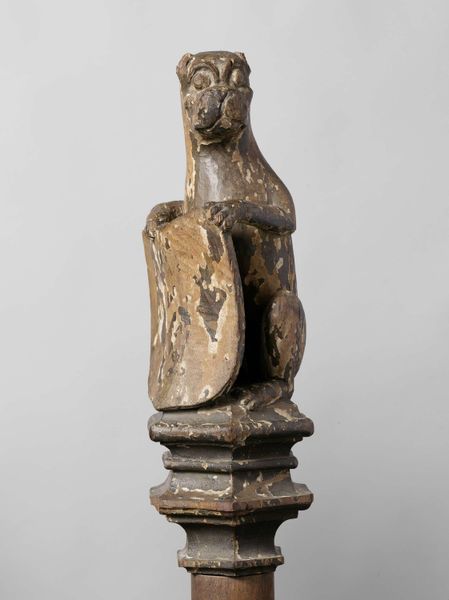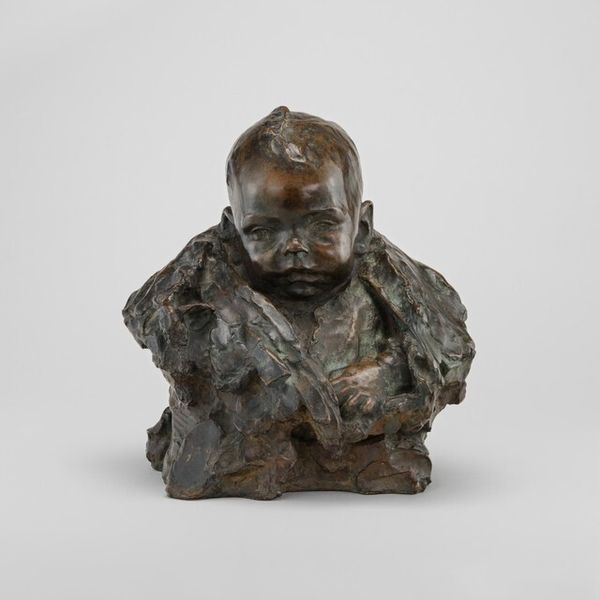
Monkey Supporting an Escutcheon, from the Top of a Balustrade or the Backrest of the Stadholder’s Chair in the Rolzaal in the Hof van Holland, The Hague 1511
0:00
0:00
carving, sculpture, wood
#
portrait
#
carving
#
sculpture
#
figuration
#
11_renaissance
#
sculpture
#
wood
#
northern-renaissance
Dimensions: height 55.5 cm, width 17 cm, depth 17 cm
Copyright: Rijks Museum: Open Domain
This is a wooden sculpture made by Joost Janszoon, it probably served as a decorative element in the Hof van Holland in The Hague. It represents a monkey supporting an escutcheon. The image invites consideration of the social and cultural history of the Netherlands. During the 17th century, the Dutch Republic was a major center for international trade, including in enslaved people, and monkeys were often seen as caricatures of human beings in depictions of enslaved people. Given this context, the image raises questions about the politics of imagery and the social conditions that shaped artistic production. We must also consider the function of the Stadholder’s chair as a symbol of political power and authority. Does this sculpture reinforce this political power or critique it? Historians use documents like trade records, political pamphlets, and other visual materials to better understand the meaning of art as something that is contingent on the social context.
Comments
No comments
Be the first to comment and join the conversation on the ultimate creative platform.
